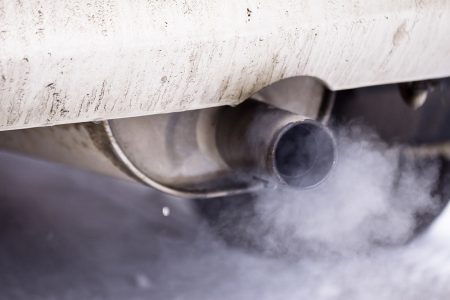August 29, 2018 – The European Union was the first jurisdiction to embrace putting a price on carbon back in 2006. At the time the price of carbon allowances was set at 30 Euros per ton. European utilities and companies purchased these allowances in an auction environment where the set price soon fell dramatically. At one point the carbon allowance price dropped to as low as 2 to 3 Euros per ton seldom rising above 10 Euros in subsequent years.
But lately, carbon allowances have hit 18.28 Euros a ton which is going to raise wholesale energy prices across the continent as European utilities pass the cost of purchasing these allowances on to consumers. In 2019 it is expected that nearly 22 million tons of carbon allowances will be purchased in Europe with the investment banks predicting a rise in price to 25 Euros in 2019 and 30 in 2020. At 30 Euros per ton of carbon, we may begin to see an impact on consumption by industry and consumers, the whole point of putting a price on carbon.
In truth, a much higher levy needs to be in place if we are to use market forces exclusively to drive down global carbon emissions in an effort to stabilize climate change. Even at 50 Euros, the impact will be marginal at best. The fear, of course, is that a significant rise in carbon pricing will seriously damage Europe’s economy.
The United States, on the other hand, has not at a national level, bought into the argument that climate change is human caused or even real. This has made it far more difficult for U.S. trading partners such as Canada to consider a price on carbon since the cost to the economy could lead to enormous market disadvantages. Nevertheless, the federal government in Canada has committed to an incremental carbon pricing strategy that pegged the price at $10 CDN per ton for this year, escalating by $10 per year until 2022 when it will hit $50. Some Canadian industrial emitters, industries, and utilities have been given license to emit carbon to a percentage limit of current levels before having to pay the carbon charge. But this emission percentage will decline over time if the policy rolls out as planned.
In Canada, the federal government faces what is likely unique where the constitution of the country recognizes the provinces and territories as environmental stewards. This has meant the federal government has had to negotiate with each sub-jurisdiction across the country to ensure there will be agreement and compliance with a federal carbon pricing policy.
This is where Canada’s Conservative Parties are pushing back. The provinces of Saskatchewan, Manitoba, and Ontario, are all presently led by conservative-leaning governments which have expressed opposition to putting a price on carbon. Saskatchewan states it doesn’t need carbon pricing because projects like Boundary Dam demonstrate that it can sequester much of the carbon its energy utilities, farms, and industries produce. This is a flawed argument but nonetheless, the province is challenging the federal government’s right to impose a national carbon price.
Manitoba wants to set its own carbon price at a slower pace of escalation than that scheduled by the federal policy.
And then there is Ontario, with a newly elected Conservative government. It has scrapped an existing carbon cap-and-trade system implemented by the previous Liberal government and has left companies and utilities holding worthless carbon allowances which they purchased for more than $2 billion. The Conservatives in Ontario state they will address climate change by other means, not by a “carbon tax” but during the election and since have offered no plan or policy.
Saskatchewan and Ontario are in the process of taking the federal government to Canada’s Supreme Court, challenging the latter’s authority to impose a national price on carbon. Manitoba has chosen not to participate and constitutional experts state that the two provinces will likely lose their case and have carbon pricing imposed on them.
It is unfortunate that a policy designed to be market driven and modeled after the successful Montreal Protocol to reduce hydrofluorocarbons in the atmosphere that endangered the ozone layer has met with such resistance. It would seem that some governments have failed to understand the direct connection between carbon emissions in the atmosphere and global warming, and have further failed to understand the economic and environmental impact that these emissions are having today, and will have in the coming decades.
Conservative values and principles should hold environmental conservation as an important tenet and yet it seems the meaning of their party labels is lost on them. Even Preston Manning, founder of Canada’s Reform Party in the 1980s, an outgrowth of western conservative alienation, has recently argued that pricing pollution is a conservative issue. Manning has stated that being a Conservative means living within your means and that this applies to the environment as well.
Barry Goldwater, the Arizona Senator who ran for the presidency of the United States against Lyndon Johnson in 1964, wrote in a 1970 book, The Conscience of a Majority, a chapter called “Saving the Earth” in which he stated “we are in trouble on this Earth in our continuing efforts to survive.”
Russell Kirk who authored The Conservative Mind, a month after the first Earth Day in 1970, wrote “nothing is more conservative than conservation,” and “only the unscrupulous or shortsighted can defend pollution.”
With populist and conservative governments emerging in the European Union, the resurgence of conservatism in Canadian provinces and the current United States federal administration, one hopes that conservative leaders educate themselves to the “conservative = conservation” paradigm. Russell Kirk, Barry Goldwater, Preston Manning, and other past Conservative leaders and philosophers should provide them the guidance to make responsible environmental policy decisions that address and mitigate the threat we humans have imposed on the planet.









